Life in the line of fire Understand article
All major X-ray and neutron facilities employ instrument scientists, who are experimental experts, liaison officers and researchers rolled into one. Andrew Wildes from the Institut Laue-Langevin explains how he juggles his daily tasks.
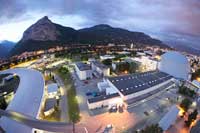
For the past 14 years I have been working as an instrument scientist at the Institut Laue-Langevin (ILL) in Grenoble, France. Life in the French Alps is certainly a far cry from my origins in the flatlands of Victoria in Australia, although the quality of the wine is comparable. I came to Europe after completing a physics degree at the University of Melbourne and a doctorate in condensed-matter physics at Monash University, both in Victoria. Initially I worked in the UK at Oxford University on neutron and X-ray scattering experiments, but then, just before my contract ended, I was offered a job at the ILL. Although I have now spent more time working here than on both my degrees and my postdoc put together, it feels much shorter!
The ILL is a high-neutron-flux research facility and is arguably the most powerful source of neutrons in the world. More than 40 instruments for experimental science are attached to the nuclear reactor that produces the neutrons. Most of the instruments are used for neutron scattering, in addition to four for nuclear physics, one for radiography and one for interferometry. All the instruments are different, although there is some overlap between the science that can be studied with them. I like to think of the institute as a giant toolbox where scientists can choose the right tool to solve each problem that comes along.
Three jobs in one
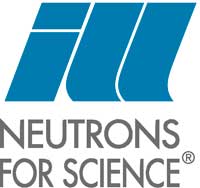
The ILL employs about 70 full-time scientists, and our work is roughly divided into three parts. First, we each have responsibility for maintaining and developing one of the instruments. I work on D17, which is a neutron reflectometer designed to measure the properties of surfaces and sub-surface interfaces buried inside a sample. The instrument is always changing as we think of ways to improve it – from boosting the neutron intensity to developing the software used to run it. The scientific experiments conducted with D17 are very broad in scope, ranging from studies of biological membranes to chemical catalysis and magnetism, so careful thought and lateral thinking are required to optimise each experiment.
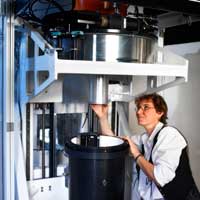
Laue diffractometer
Image courtesy of ILL /
Artechnique
Second, instrument scientists have local contact duties, which means helping visiting academics to carry out and interpret their experiments. The ILL welcomes about 2000 scientists each year who perform a total of about 750 experiments during that time. Anyone can propose an experiment at the ILL, but they must be approved through competitive scientific evaluation. Once a proposal is accepted, the researchers are assigned beam time to carry out the experiment. Neutron-scattering experiments typically take between two days and two weeks, depending on the instrument and the type of experiment, and the visitors want to get the best use out of every available neutron.
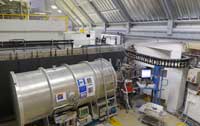
designed to measure the
properties of surfaces and
sub-surface interfaces
buried inside a sample
Image courtesy of ILL / Briq
This aspect of the work can be very rewarding, as my colleagues and I are exposed to new and exciting ideas, and get to meet many people. We can act as the local contact on any of the instruments at the ILL. As well as working on D17, I often act as the local contact for the three-axis spectrometers, which are instruments particularly suited for measuring structural and magnetic vibrations in crystals. Being able to work on other instruments means that I can collaborate closely with visitors as they move around the facilities at the ILL – far more satisfying than being confined to one-off experiments on a single instrument.
Third, all instrument scientists have their own research programmes. Ultimately, the ILL is judged on the science that it produces, and we are encouraged to publish our work regularly. My research is in the measurement of magnetic structures and dynamics. A neutron has no electrical charge, but it does have a magnetic moment that will interact with any magnetic induction in a sample, which makes neutron scattering a sensitive probe for experiments in magnetism.
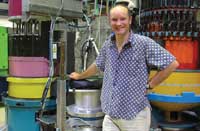
instrument scientist, Andrew
Wildes holds several diverse
responsibilities
Image courtesy of Andrew
Wildes
One of my research programmes looks at the magnetic structures of iron-based metallic glasses, which are poorly understood, but are used widely in industry. Another programme looks at magnetic structures and vibrations in low-dimensional materials, such as thin magnetic films. Research is probably the most challenging and the most fun part of my work, as I am free to use my imagination and pursue the science that I find the most interesting.
A career with neutrons
The division of time between the three parts of an instrument scientist’s job can fluctuate enormously. You must fight to make time for all three, and sometimes it feels as though you do, in fact, have three jobs! In particular, when there are problems on the instrument or visitors needing help, it can be very difficult to find time for your own research. The reactor runs for four cycles of 50 days each year, and during these cycles it can be very busy indeed. Between cycles, there is more time to concentrate on analysing data, writing journal articles and attending conferences, although any major modifications to the instrument must also be made while the reactor is shut down. Finding time for holidays during all this can lead to friction, particularly when trying to negotiate with one’s family.
Nevertheless, being an instrument scientist means having a great job, tremendous fun and plenty of career opportunities. A few years ago, neutron scattering was considered to be in decline, with many of the older neutron sources being closed down. However, there is a new wave of investment with the construction of many new and powerful neutron sources all over the world, and also with new instrumentation at established sources like the ILL. Instrument scientists are in great demand, so it is an excellent time to start a career with neutrons.
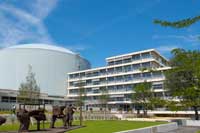
Image courtesy of ILL /
Artechnique
A good way to begin is to try neutron experiments during doctoral work. I used neutron scattering during my PhD for magnetic-structure determination, which taught me the basics and introduced me to many other people who use neutrons, some of whom I now work with on a regular basis. A background in physics is useful for an instrument scientist, as the techniques are all physics-based, but centres like the ILL have excellent opportunities for multidisciplinary science and also employ instrument scientists who are trained in chemistry or biology.
Am I still enjoying working at the ILL after 14 years? In Nick Hornby’s novel How To Be Good, the main character compares science and the arts, saying one is “all empathy and imagination and exploration and the shock of the new, and the outcome is uncertain”. That is how I feel about my job, every day. In fact, Hornby’s character was actually talking about the arts, going on to say that science “presses this button, then that one, and bingo! Things happen. It’s like operating a lift”. Believe me, this is nothing like what we do, and just goes to show that Hornby should spend more time in a physics lab.
Acknowledgement
This is an updated version of an article published in Physics World (see Wildes, 2007) and is reproduced with kind permission of the publisher.
References
Resources
- To learn more about neutron research, see: http://neutron-eu.net
- To find out more about ILL, see www.ill.eu
Institutions
Review
Andrew Wildes, an instrument scientist at the Institut Laue-Langevin, discusses his life as a professional scientist and gives an insight into the workings of a large international scientific facility. The article would make a good starting point for a discussion of the careers available to scientists, and to physicists in particular. It also provides some information about how large-scale international facilities are run and how they operate.
Alby Reid, UK





